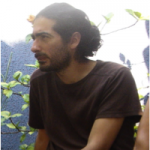Link to Pubmed [PMID] – 18979383
Link to DOI – 10.1080/17470910701563558
Soc Neurosci 2008 ; 3(3-4): 303-16
Children with high resistance to peer influences differ from their low-resistance counterparts in the degree of functional connectivity in fronto-parietal and prefrontal cortical networks. Here we explored the possibility that the degree of morphological similarities across the same cortical regions also varies as a function of this behavioral trait. Using structural magnetic-resonance (MR) images, we measured cortical thickness in a total of 295 adolescents (12 to 18 years of age). We found that inter-regional correlations in cortical thickness increased with the resistance to peer influence (RPI); this was especially the case, in female adolescents, in the premotor and prefrontal networks. We also observed significant differences between the adolescents with high and low RPI scores in their general intelligence and the scores of positive youth development. We suggest that these morphological findings might reflect differences, between adolescents with high vs. low resistance to peer influences, in a repeated and concurrent engagement of these networks in social context.

